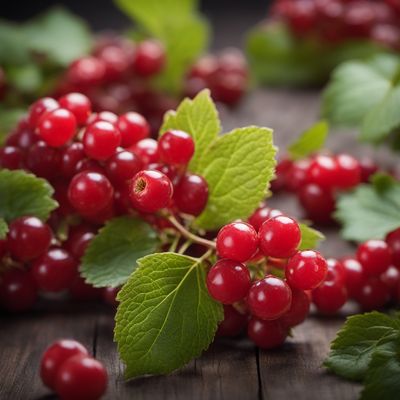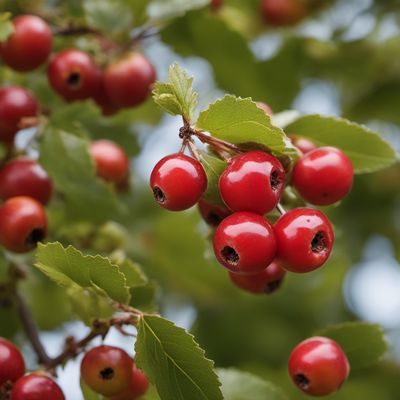
Ingredient
Hawberries
The Vibrant Delight: Exploring the World of Hawberries
Hawberries are small, round fruits that range in color from bright red to deep purple. They have a smooth, glossy skin and a juicy, slightly tart flesh. The texture of hawberries is firm yet tender, with a delicate crunch when bitten into. These berries are known for their vibrant appearance and are often used to add a pop of color to dishes. Their flavor is a delightful balance of sweetness and tartness, making them a versatile ingredient in both sweet and savory recipes.
Origins and history
Hawberries have a rich history that dates back centuries. They are native to Europe and have been used in traditional European cuisines for generations. These berries were highly valued for their medicinal properties and were believed to have healing powers. Over time, hawberries spread to other parts of the world, including North America, where they were embraced by indigenous cultures. Today, hawberries are enjoyed globally and are celebrated for their unique taste and vibrant appearance.
Nutritional information
Hawberries are a nutritional powerhouse, packed with essential vitamins and minerals. They are a good source of vitamin C, providing a boost to the immune system. Additionally, hawberries contain antioxidants that help protect the body against free radicals. These berries are low in calories and fat, making them a guilt-free addition to any diet.
Allergens
There are no known allergens associated with hawberries.
How to select
When selecting hawberries, look for berries that are plump, firm, and brightly colored. Avoid berries that are mushy or have any signs of mold. The best hawberries will have a glossy skin and a fresh, sweet aroma.
Storage recommendations
To maintain the freshness and quality of hawberries, store them in the refrigerator in a breathable container or a perforated plastic bag. Avoid washing the berries until just before use to prevent moisture buildup. Hawberries can be stored for up to a week, but it is best to consume them as soon as possible for optimal flavor.
How to produce
Hawberries can be grown in home gardens or small-scale farms. They thrive in temperate climates and require well-drained soil and full sun exposure. Plant hawberry bushes in early spring and provide regular watering and fertilization. With proper care, you can enjoy a bountiful harvest of hawberries in late summer or early fall.
Preparation tips
Hawberries can be enjoyed in a variety of ways. They can be eaten fresh as a snack, added to salads for a burst of color and flavor, or used in desserts such as pies, tarts, and jams. Hawberries can also be cooked down into sauces or syrups to enhance the taste of savory dishes like roasted meats or grilled vegetables. To extract the maximum flavor from hawberries, gently crush them before incorporating them into recipes.
Culinary uses
Hawberries are commonly used in desserts such as pies, tarts, and jams. They can also be used to make sauces or syrups for savory dishes. Additionally, hawberries can be added to salads or used as a garnish to add a pop of color and flavor.
Availability
Hawberries are commonly available in Europe, North America, and other temperate regions where they are cultivated.
More ingredients from this category » Browse all

Buffalo berries
The Tangy Delight of Buffalo Berries

Riberries
The Vibrant Delight

Phalsa fruits
The Exotic Jewel of Summer: Phalsa Fruits

Elderberries
The Power of Elderberries

Bayberries
The Hidden Gems of the Forest

Guelder rose berries
Guelder Rose Berries: Nature's Vibrant Gems

Silverberries
The Shimmering Gems of the Culinary World

Midland hawberries
The Hidden Gems of Midland: Exploring the Delights of Hawberries

Dwarf elderberries
The Tiny Powerhouse: Exploring the World of Dwarf Elderberries

Che berries
The Exotic Delight: Che Berries

Sorb fruits
The Sweet and Tangy Delights of Sorb Fruits

Saskatoons
The Sweet Berry of the Prairies